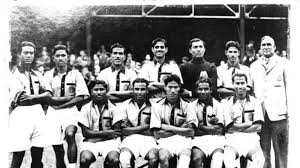
The Evolution of Indian Football: From Struggles to Promising Future
Indian football has come a long way from its humble beginnings. Once overshadowed by cricket, the sport has been steadily gaining popularity and prominence in the country. With the rise of the Indian Super League (ISL) and the increasing number of talented young players, Indian football is poised for a bright future.BZBET
The history of Indian football is rich with stories of perseverance and passion. In the early 20th century, Indian clubs like Mohun Bagan and East Bengal were the flag-bearers of the sport, achieving remarkable success on the national and international stages. Mohun Bagan’s historic victory in the 1911 IFA Shield, where they defeated the British team East Yorkshire Regiment, remains a significant milestone in the history of Indian football.
However, despite these early successes, Indian football struggled to maintain its momentum. The lack of infrastructure, investment, and proper management led to a decline in the sport’s popularity. Cricket’s dominance in the Indian sports landscape further marginalized football, pushing it to the fringes of the country’s sporting culture.
The turning point came with the establishment of the Indian Super League in 2014. The ISL brought much-needed attention to Indian football, attracting investments, international players, and coaches. The league’s format, which follows a franchise-based model similar to the Indian Premier League (IPL), created a platform for Indian players to showcase their talent on a larger stage. The ISL’s success has not only revitalized the sport but also inspired a new generation of football enthusiasts in the country.
The emergence of young Indian players like Sunil Chhetri, Sandesh Jhingan, and Gurpreet Singh Sandhu has further fueled the growth of football in India. Chhetri, in particular, has become the face of Indian football, breaking records and leading the national team with distinction. His dedication to the sport and his consistent performances have earned him the respect of fans and peers alike. Chhetri’s influence extends beyond the field; he has been a vocal advocate for the development of football in India and has inspired many young players to pursue the sport professionally.
Grassroots development has also played a crucial role in the evolution of Indian football. Programs like the AIFF’s ‘Baby Leagues’ and the ‘Khelo India’ initiative have focused on nurturing young talent from an early age. These initiatives aim to create a strong foundation for the future of Indian football by providing aspiring players with the necessary skills, training, and opportunities to compete at higher levels.
The success of the Indian women’s football team has also contributed to the sport’s growing popularity. The team has consistently performed well in regional competitions and has been steadily climbing the FIFA rankings. Players like Bala Devi and Aditi Chauhan have become role models for young girls, proving that football is not just a man’s game in India.
Despite these positive developments, Indian football still faces challenges. The lack of a robust domestic league structure, inadequate infrastructure, and limited exposure to international competition are some of the hurdles that need to be addressed. However, with the increasing interest in the sport and the ongoing efforts to improve the ecosystem, there is hope that Indian football will continue to grow and eventually compete at the highest levels.
In conclusion, the journey of Indian football is a story of resilience and hope. While the sport has faced its fair share of struggles, the recent developments suggest a promising future. With continued investment, support, and focus on grassroots development, Indian football has the potential to become a major force on the global stage.